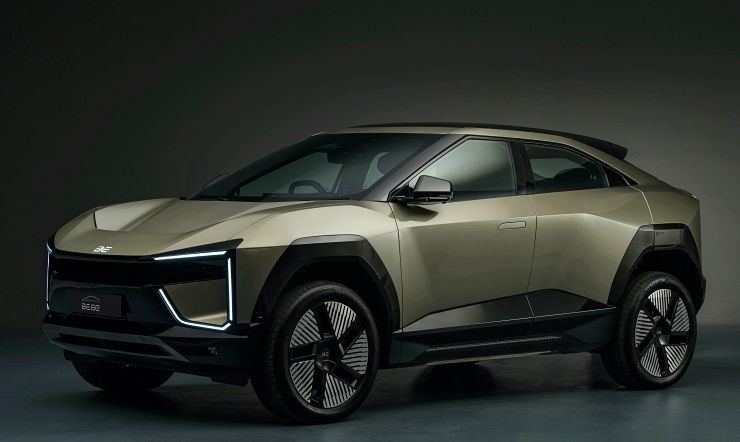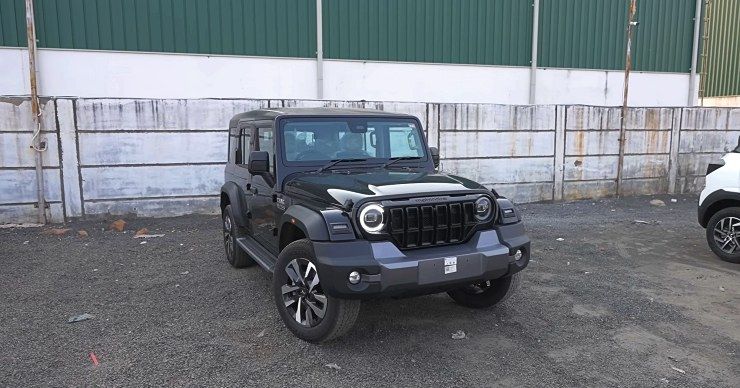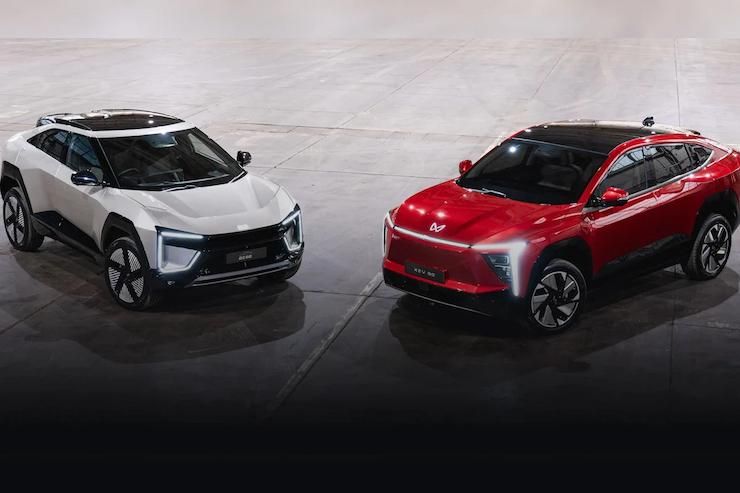Mahindra Only Car Maker To Grow At Double Digits In FY2025!



In a year when India’s automotive industry posted modest growth and several giants faltered, Mahindra & Mahindra (M&M) stood tall, marking a breakout performance that has put rivals on notice. As per data released by the Federation of Automobile Dealers Associations (FADA), M&M posted a stellar 19.95% year-on-year growth in passenger vehicle (PV) sales in FY2025, emerging as the biggest gainer in market share among top players. This significant shift underscores a larger realignment in India's auto landscape—where Mahindra's SUV-first approach and rural strength have turned out to be game changers.
Let’s unpack what drove Mahindra’s standout performance and what it means for the future.
FY2025 wasn’t an easy ride for most carmakers. While India’s overall passenger vehicle market grew by 4.87%, crossing 41.5 million units in sales, the growth was unevenly distributed.
• Maruti Suzuki, the market leader, saw a modest 3.95% growth in volumes. But its market share slipped from 40.60% to 40.25%, indicating a gradual erosion of dominance, especially in the SUV segment.
• Hyundai, surprisingly, registered a decline of 0.66% in sales and saw its market share drop to 13.46% from 14.21%—a rare contraction in a growing market.
• Tata Motors also saw a marginal dip in sales by 0.67%, and its market share fell to 12.90% from 13.62%.
In sharp contrast, Mahindra’s passenger vehicle sales jumped to 5.13 million units, up from 4.27 million the previous year. Its market share grew from 10.79% to 12.34%, making it the only major automaker to post double-digit growth in both volume and share.

Mahindra’s rise is no accident—it is the result of a consistent and focused strategy around SUVs. At a time when SUVs now account for nearly 50% of all passenger vehicle sales in India, Mahindra has emerged as the biggest beneficiary, thanks to its all-utility-vehicle portfolio.
This approach aligns perfectly with evolving buyer preferences. Indian consumers are increasingly seeking vehicles that combine road presence with versatility, and Mahindra’s line-up delivers exactly that.
Popular models like the Scorpio-N, XUV700, and Thar/Thar Roxx have not only captured buyer interest but continue to enjoy strong bookings and extended waiting periods. The company's ability to deliver rugged yet tech-laden vehicles has resonated deeply with both urban and rural buyers.
Another critical success factor has been Mahindra’s deep-rooted presence in rural India. According to FADA, rural PV sales grew by 7.93% in FY2025—more than double the urban growth rate of 3.07%. Mahindra, with its historic brand equity and robust dealer network in semi-urban and rural areas, leveraged this shift better than any of its peers.
The company’s focus on expanding showrooms and service centres in Tier 2 and Tier 3 towns has paid dividends, especially as rural incomes and aspirations continue to rise.

While Tata Motors continues to lead the electric vehicle space, its stranglehold is slipping. In FY2025, Tata’s EV market share dropped significantly from 70.52% to 53.52%.
Mahindra, meanwhile, has started to firm up its position, increasing its EV market share to 7.60% from 6.69%. Though still small in absolute terms, this signals intent and upward momentum. The company’s future EV plans, including the recently-launched and very well received BE6 and XEV 9e are likely to significantly strengthen its presence further.
Despite all the good news, Mahindra’s continued growth is not without challenges.
For one, the company’s near-total reliance on SUVs makes it vulnerable to sudden shifts in buyer sentiment, especially as economic headwinds gather. The premium SUV segment in particular depends heavily on upper-middle-class discretionary spending—an area now facing pressure due to the recent stock market correction, which has impacted investor wealth and consumer sentiment.
Luxury players like Mercedes-Benz have already revised their outlooks for FY2026, citing the market correction as a key reason. Mahindra could see a knock-on effect if aspirational spending begins to shrink.
Moreover, any policy changes around fuel efficiency, taxation of large vehicles, or green mobility incentives could disproportionately affect SUV-heavy portfolios. A regulatory push toward smaller cars or mass-market EVs could force a realignment of Mahindra’s product strategy.
However, all signs point to SUVs remaining the body style of choice—there is hardly a month when the sales charts aren’t led by an SUV and Mahindra has lots of them across a very broad price and use-case spectrum. On the EV front, the response to BE6 and XEV 9e suggest the carmaker has a pretty good handle on the pulse of the buyers.
Even as sales rose, inventory levels at dealerships also crept up toward the end of FY2025. According to FADA, PV inventory stood at a high 50–55 days by March 2025, raising concerns about potential overstocking.
If not corrected, high inventories could lead to discounting pressures, which may affect profitability for both the manufacturer and its dealer partners. FADA has urged OEMs to set more realistic sales targets that reflect actual ground demand rather than pushing wholesale numbers.
Mahindra will need to navigate this carefully to maintain the health of its retail network.
The upcoming year promises to be equally competitive. FADA has projected low single-digit growth for the passenger vehicle market, with new model launches and expanding EV options expected to sustain interest.
For Mahindra, the challenge will be to sustain momentum without overextending, while also balancing its SUV-centric strategy with changing consumer needs and economic realities.
Its advantage lies in a strong product line, robust rural appeal, and growing EV presence. But success in FY2026 will depend on how it responds to early signs of premium demand softening and manages dealer inventory efficiently.
FY2025 has marked a turning point in India’s automotive landscape, and Mahindra has emerged as a key beneficiary of this shift. With competitors slowing down and buyers showing increasing preference for SUV-styled, feature-rich vehicles, Mahindra has made the most of its strengths.
Whether this year’s performance marks the beginning of a long-term reshaping of the market or a temporary reshuffle will depend on how M&M adapts to the evolving economic and regulatory climate. For now, however, it is clear: Mahindra has outshone all in FY2025—with the numbers, the momentum, and the market on its side.